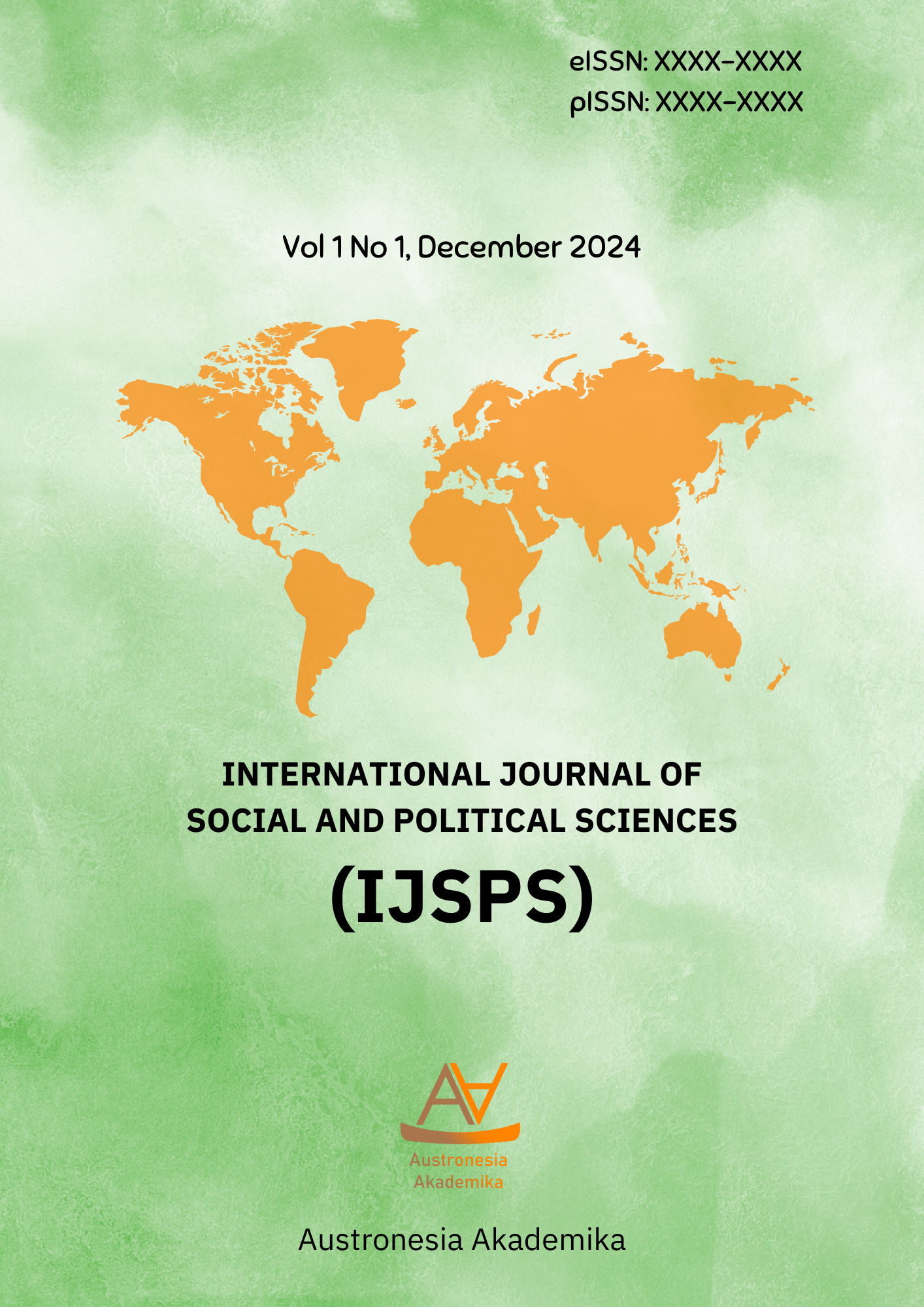Menyama Braya Image of Acculturation of Hinduism and Islam in Budakeling Village
DOI:
https://doi.org/10.69812/ijsps.v1i1.9Keywords:
Menyama braya, Acculturation, ToleranceAbstract
This study explores the process of acculturation and tolerance between the Hindu and Muslim communities in Budakeling Village, Bali, focusing on the concept of "menyama braya" as a foundation for fostering inter-religious harmony. Bali, known for its strong Hindu traditions, is a multicultural society where religious and cultural diversity coexist. The research aims to identify how the practice of "menyama braya," which signifies mutual respect and recognition of others as kin, facilitates peaceful cohabitation and cultural exchange between these two religious communities. A qualitative research method with a descriptive approach was employed, involving non-participant observation, interviews with community leaders, and documentation analysis. The findings highlight the significant role of "menyama braya" in promoting intercultural dialogue, as reflected in the adoption of Balinese identities by Muslim residents, as well as joint practices such as the megibung (shared meals), ngejot (food charity), and participation in Subak (irrigation systems), along with the use of Balinese language and arts. These practices not only represent cultural exchange but also strengthen social bonds and religious tolerance. The study concludes that the "menyama braya" concept plays a crucial role in maintaining unity and peace among different religious communities in Budakeling Village, supporting the idea that multiculturalism thrives through mutual respect and cultural integration.
Downloads
References
Adhi, M. K., Seniwati, N. P., & Ardana, I. K. (2019). Menyama Braya : Representasi Kearifan Lokal Bali Dalam Pemertahanan Persatuan Bangsa. Suluh Pendidikan, 17(2), 115–128.
Arimbawa, I. K. S. (2023). Membangun Gerakan Moderasi Beragama Melalui Seni Pertunjukan. 14(2), 165–175.
Atmadja, Nengah Bawa et al. (2017). Bali Pulau Banten Perspektif Sosiologi Komodifikasi Agama (pertama). Denpasar: Pustaka Larasan.
Atmadja, Nengah Bawa. (2010). Ajeg Bali (Gerakan, Identitas Kultural, dan Globalisasi). Yogyakarta: LKIS.
Atmadja, Nengah Bawa. (2010). Genealogi Keruntuhan Majapahit (Islamisasi, Toleransi, dan Pemertahan Agama Hindu di Bali. Yogyakarta: Pustaka Pelajar.
Bandana, I. G. W. S. (2015). Sistem Nama Orang Bali: Kajian Struktur dan Makna. Aksara, 27(1), 1–11.
Hanip, S. P. N., Yuslih, M., & Diniaty, L. (2020). Tradisi Ngejot: Positive Relationship Antar Umat Beragama. Potret Pemikiran, 24(2), 71.
Maharlika, F. (2018). Studi Multikultural Pada Ornamen Bali Pepatraan: Patra Cina. Serat Rupa Journal of Design, 2(1), 67.
Masdarini, L., & Marsiti, C. I. R. (2021). Identifikasi Pola Makan Tradisi Megibung Di Desa Sibetan Kecamatan Bebandem Kabupaten Karangasem. Jurnal Kuliner, 1(1), 49–60.
Mashad, Dhurorudin. (2014). Muslim Bali (Mencari Harmoni yang Hilang). Jakarta: Pustaka Al-Kaustar.
Nazir, Moh. (2014). Metode Penelitan. Bogor: Ghalia Indonesia.
Pageh, I. M. et al. (2013). Model Integrasi Masyarakat Multietnik Nyama Bali-Nyama Selam (Belajar dari Enclaves Muslim di Bali). Denpasar: Pustaka Larasan.
Parekh, Bikhu. (2008). Rethinking Multiculturalism (Keberagaman Budaya dan Teori Politik). Yogyakarta: Penerbit PT Kanisius.
Putra, I. N. M. (2021). Spirit Manusa Yajña dan Menyama braya Sebagai Etika Sosial Masyarakat Hindu Bali. Purwadita : Jurnal Agama Dan Budaya, 5(1), 1–8.
Rafi’i. A.A, et al. (2022). Tradisi Megibung Pada Budaya Hindu dan Muslim di Desa Tumbu, Kecamatan Karangasem, Kabupaten Karangasem. Jurnal Kuliner, 2(1).
Siyoto, Sandu dan Sodik, A. M. (2015). Dasar Metode Penelitian (Ayup (ed.); Pertama). Yogyakarta: Literasi Media Publishing.
Suryawan, N., Wiryawan, I. W., Gata, I. W., & Kandia, I. W. (2023). Subak Bentuk Kearifan Lokal Bali Berbasis Tri Hita Karana dan Tantangannya pada Era Globalisasi. Sphatika: Jurnal Teologi, 14(1), 61–73.
Temaja, I.G.B.W.B. (2017). Sistem Penamaan Orang Bali. Jurnal Humanika, 24(2).
Warsito, H.R. (2012). Antropologi Budaya. Yogyakarta:Penerbit Ombak.
Wiana, I.K. (2004). Mengapa Bali Disebut Bali. Surabaya: Paramita.
Yantos dan Putriana. (2020). Kearifan Lokal Dalam Membangun Kerukunan Islam dan Hindu di Desa Adat Kuta Badung. Jurnal Dakwah Risalah, 31(2).
Downloads
Published
How to Cite
Issue
Section
License
Copyright (c) 2024 I Dewa Gede Yoga, Aris Arif Mundayat, Yuyun Sunesti

This work is licensed under a Creative Commons Attribution-ShareAlike 4.0 International License.
You are free to:
- Share — copy and redistribute the material in any medium or format for any purpose, even commercially.
- Adapt — remix, transform, and build upon the material for any purpose, even commercially.
- The licensor cannot revoke these freedoms as long as you follow the license terms.
Under the following terms:
- Attribution — You must give appropriate credit, provide a link to the license, and indicate if changes were made . You may do so in any reasonable manner, but not in any way that suggests the licensor endorses you or your use.
- ShareAlike — If you remix, transform, or build upon the material, you must distribute your contributions under the same license as the original.
- No additional restrictions — You may not apply legal terms or technological measures that legally restrict others from doing anything the license permits.











